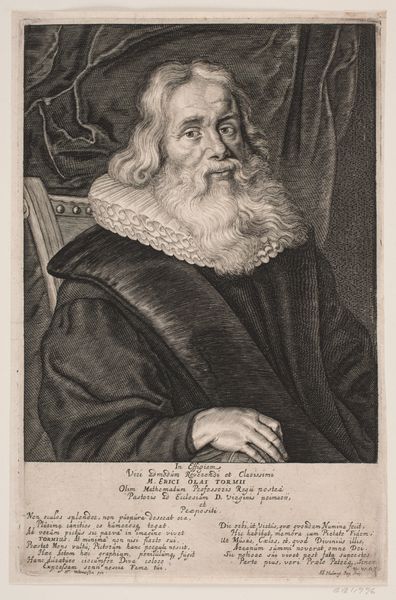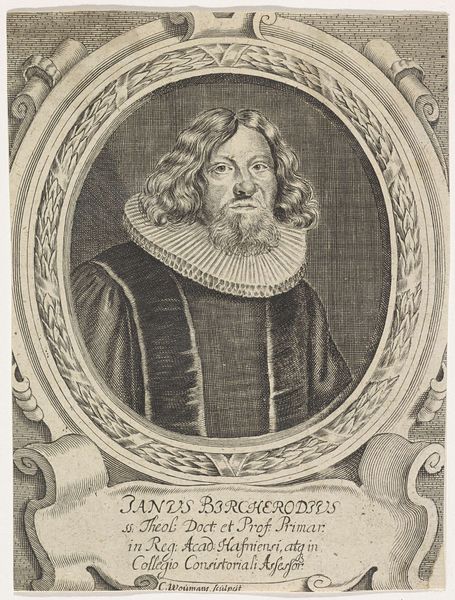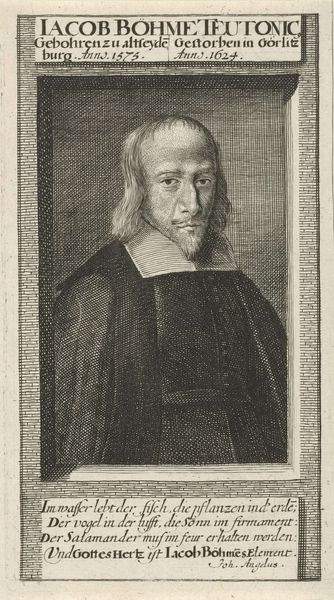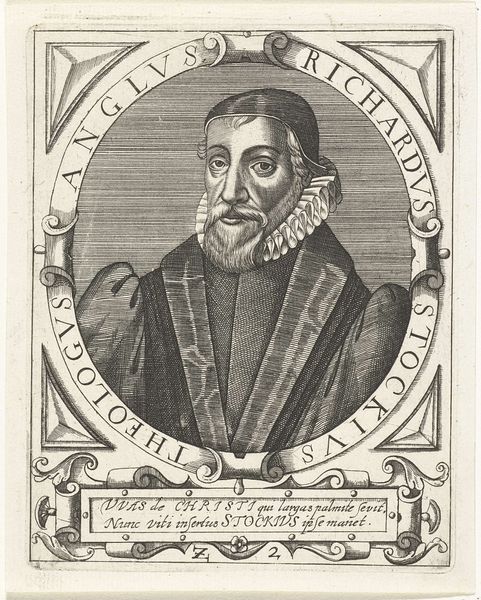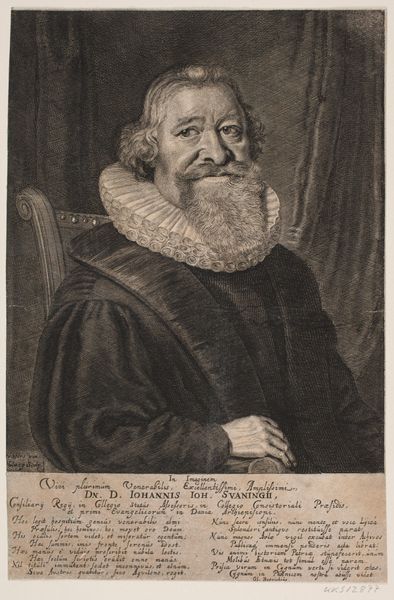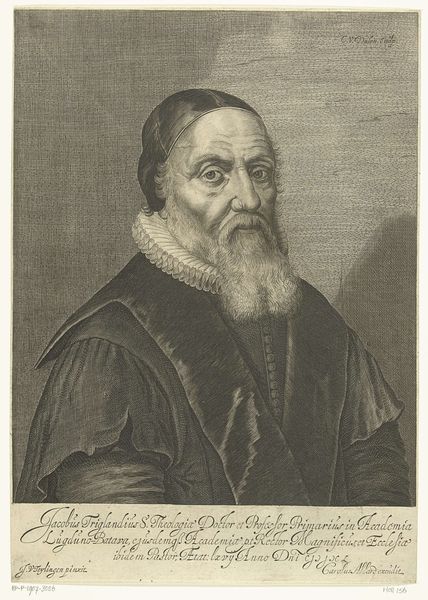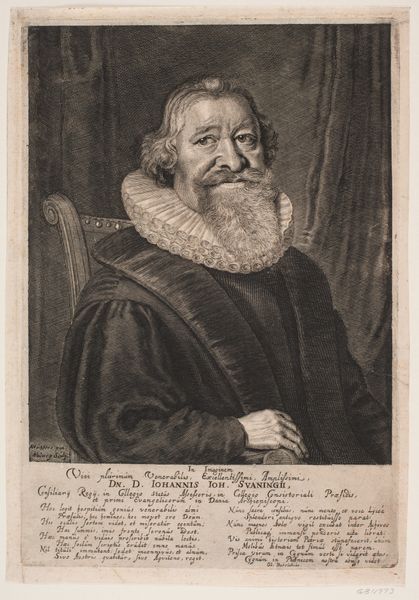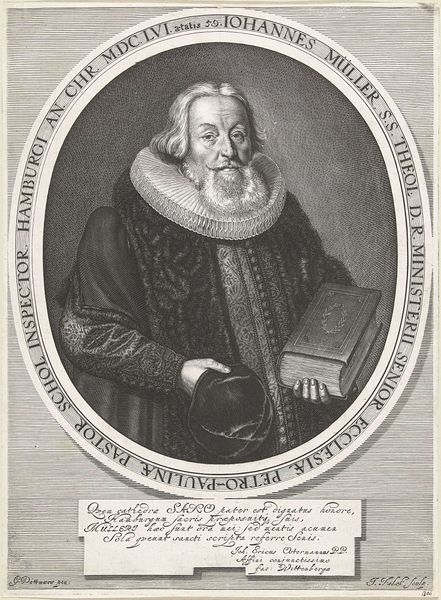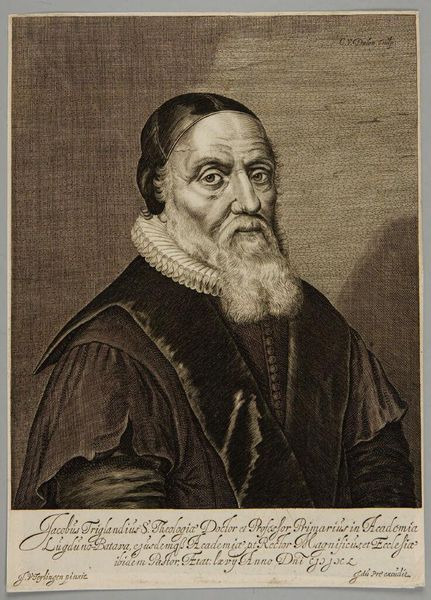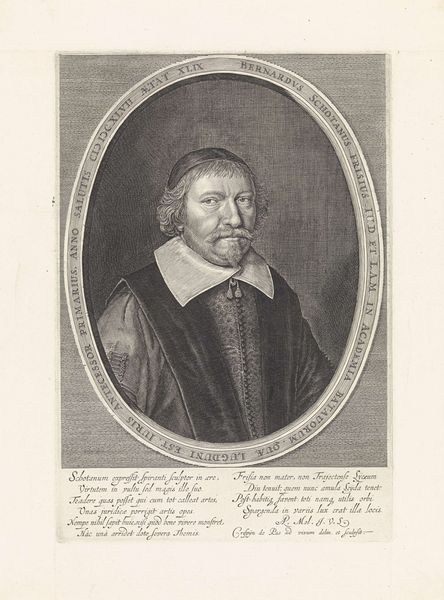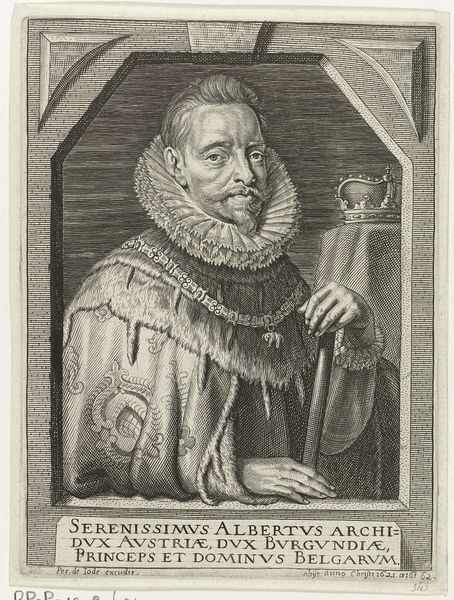
print, engraving
#
portrait
#
baroque
# print
#
old engraving style
#
engraving
Dimensions: height 282 mm, width 180 mm
Copyright: Rijks Museum: Open Domain
Curator: What strikes me immediately about this print, titled "Portret van Sir John Webster," made around 1660-1676, is its somber tone. The subject's gaze is direct and serious. Editor: The work’s starkness is created from the process of engraving and choice of line; consider the labor involved in carefully etching the image onto the plate and then pulling prints. And given its function as portraiture, the materiality served to document and disseminate the sitter’s image widely, underscoring a growing accessibility in imagery at that time. Curator: Indeed. Considering Theodor Matham was the printmaker, his career illustrates the social power structures within the art world in Amsterdam during the Baroque period. The Rijksmuseum currently holds this portrait, demonstrating its historical relevance in preserving imagery that highlights powerful social actors. The inscription suggests we learn about an educated man named Vitus Jacobi. Editor: What about the ways in which a print becomes "art" versus mere visual documentation? Is the work more successful as a conveyor of technical ability or as an expressive work that conveys more nuanced social positions and identity construction of this Jacboi? What kind of printing press would he use and how many images could the metal printing plate disseminate? The answers could illuminate more than its initial simple portrait. Curator: You are right. If we examine his attire – that wide collar and heavy cloak – as well as the heraldic symbols, those would be key indicators to understanding social status within the complex networks of the Dutch Golden Age. Furthermore, his steely gaze speaks volumes regarding the projected persona crafted through commissioned portraiture. Editor: Right! So the choice of material – printmaking – contributes both to accessibility of portraiture AND a solidification of status for circulation within elite social and mercantile networks. It emphasizes the value and exchange within Dutch society itself! Curator: That's well said. This examination highlights both the historical importance and its material existence to unveil an intricate social matrix. Editor: Absolutely. Considering both informs our understanding profoundly.
Comments
No comments
Be the first to comment and join the conversation on the ultimate creative platform.
